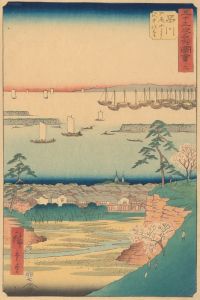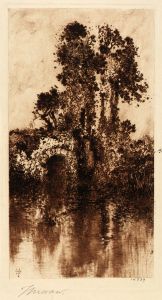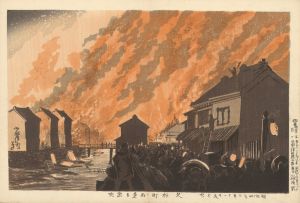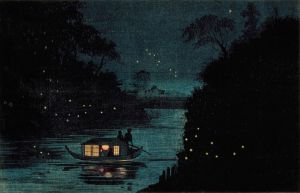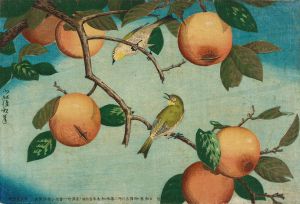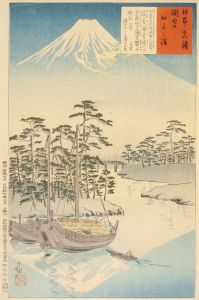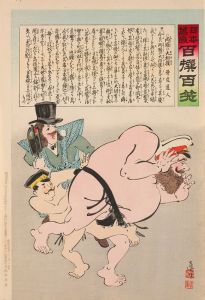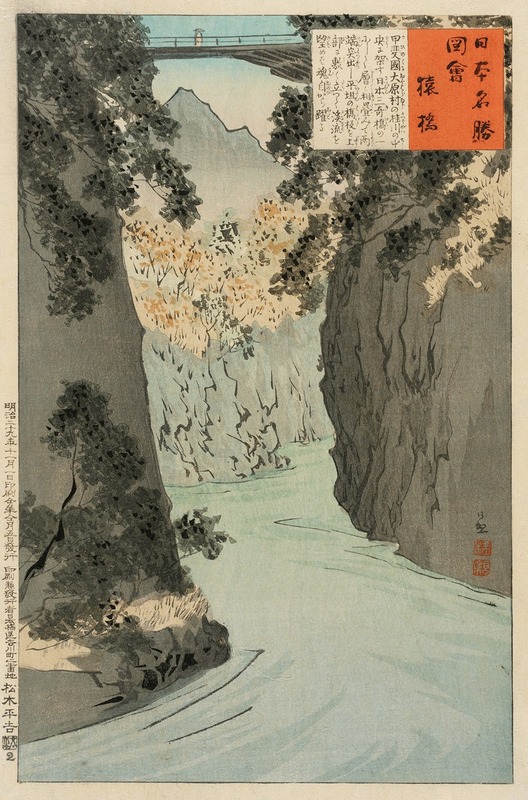
Monkey Bridge
A hand-painted replica of Kobayashi Kiyochika’s masterpiece Monkey Bridge, meticulously crafted by professional artists to capture the true essence of the original. Each piece is created with museum-quality canvas and rare mineral pigments, carefully painted by experienced artists with delicate brushstrokes and rich, layered colors to perfectly recreate the texture of the original artwork. Unlike machine-printed reproductions, this hand-painted version brings the painting to life, infused with the artist’s emotions and skill in every stroke. Whether for personal collection or home decoration, it instantly elevates the artistic atmosphere of any space.
Monkey Bridge, also known as "Saruhashi," is a woodblock print created by the Japanese artist Kobayashi Kiyochika. Kiyochika, born in 1847 and passing away in 1915, was a prominent figure in the Meiji era of Japan, known for his ukiyo-e prints that often depicted landscapes, historical events, and scenes of everyday life. His work is particularly noted for its use of light and shadow, influenced by Western art techniques, which he incorporated into the traditional Japanese woodblock printing style.
The print "Monkey Bridge" is part of Kiyochika's series of landscape prints. Saruhashi, or Monkey Bridge, is a famous historical bridge located in Yamanashi Prefecture, Japan. The bridge is renowned for its unique construction, which does not use any nails or metal fittings, relying instead on the natural interlocking of wooden beams. It spans the Katsura River and has been a subject of fascination and inspiration for many artists and poets throughout Japanese history.
Kiyochika's depiction of Monkey Bridge captures the serene and picturesque quality of the location. The print typically features the bridge set against a backdrop of lush, verdant hills and the flowing river below. The composition often includes elements such as mist or fog, which add a sense of mystery and tranquility to the scene. Kiyochika's use of light and shadow in this print is particularly effective in conveying the time of day and the atmospheric conditions, enhancing the overall mood of the piece.
Kiyochika's work, including "Monkey Bridge," reflects the transitional period in Japanese art during the Meiji era, when Japan was opening up to Western influences while also striving to preserve its traditional cultural heritage. His prints are characterized by a blend of traditional Japanese aesthetics and Western techniques, making them unique and historically significant.
"Monkey Bridge" is an excellent example of Kiyochika's ability to capture the beauty of Japan's natural landscapes while also experimenting with new artistic methods. The print remains a valuable piece of art, appreciated for its historical context and artistic merit. It is often studied by art historians and enthusiasts who are interested in the evolution of Japanese woodblock printing and the cultural exchanges between Japan and the West during the late 19th and early 20th centuries.
Kiyochika's legacy as an artist is marked by his innovative approach and his contributions to the development of modern Japanese art. His works, including "Monkey Bridge," continue to be celebrated and preserved in museums and collections around the world, offering a glimpse into the rich artistic traditions of Japan and the dynamic changes of the Meiji era.





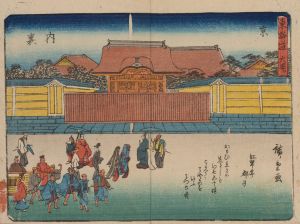
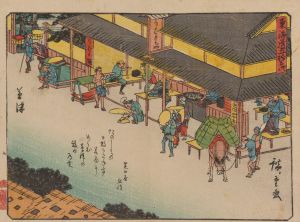
![Tora-no-mon-gai; Aoi Hill, Outside the Tiger Gate [Tora-no-mon]](/imgs/213040/s/ando-hiroshige-toranomongai-aoi-hill-outside-the-tiger-gate-toranomon-6629cde0.jpg)
